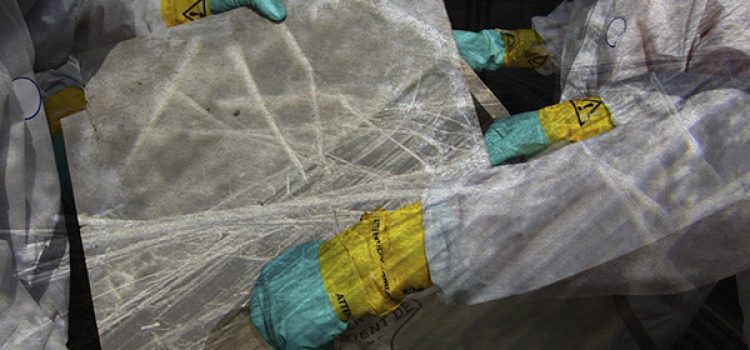A school in Aberdeen was recently criticised for their poor response to the discovery of asbestos in their building.
What could have been done differently? And how could the school have handled the asbestos incident more effectively?
Asbestos in the school building
During work to move a doorway, an apprentice joiner removed a board using a hammer and chisel, but suspected the material contained asbestos, and alerted his supervisor. While the board was wrapped in plastic, and the in-situ board covered over, no action was taken to deal with contamination of the area or to protect people on site.
In fact, 25 people were allowed into the school after the incident. It was only after the risk control team was notified that the correct action was taken. The Unite union’s Tommy Campbell described the procedures put in place as “woeful”.
Thousands of tonnes of asbestos still in place
While asbestos use has been outlawed since 2000, it was widely used as a fire-retardant building material for decades. This versatile material comes in many forms, which is why it remains so prevalent in schools, offices, factories and warehouses – on walls, floors, ceilings and external surfaces.
Forms of asbestos include:
- Lagging
- Insulating boards
- Limpet (sprayed asbestos)
- Coatings
- Liquid
- Cement
Asbestos was used in such a wide range of materials that it may be safer to assume that it is included in a material, unless you have evidence that it does not.
The dangers of asbestos
Breathing asbestos fibres can lead to serious diseases which can take many years to develop. In many cases, once a disease is diagnosed, it is too late to treat the condition.
Asbestos fibres can cause:
- Asbestosis
- Mesothelioma
- Pleural thickening
- Asbestos-related lung cancer
Your duty to manage asbestos
You have a duty to protect your employees and visitors, whether you own or rent a building. Under the Control of Asbestos Regulations 2012, you have a duty to:
- Take reasonable steps to identify any materials containing asbestos
- Presume that materials contain asbestos unless you have evidence that they do not
- Keep records of the location and condition of asbestos-containing materials
- Assess the risk of people being exposed to asbestos fibres
- Create and implement a plan for managing asbestos risks
- Review and update your asbestos risk plan
- Notify people who work on, or disturb, asbestos materials in your workplace.
Asbestos awareness training
The Control of Asbestos Regulations make it clear that employers have a duty to raise awareness of asbestos risks. Without this awareness, employees and visitors can be put at risk.
Delivering regular awareness training can be costly and time-consuming. That’s why we created eLearning programmes to cover asbestos awareness, and other key health and safety topics, such as risk assessments and working safely. Our eLearning courses can be delivered on your premises, and the content can be tailored to your organisation, or you can choose off-the-shelf solutions.



